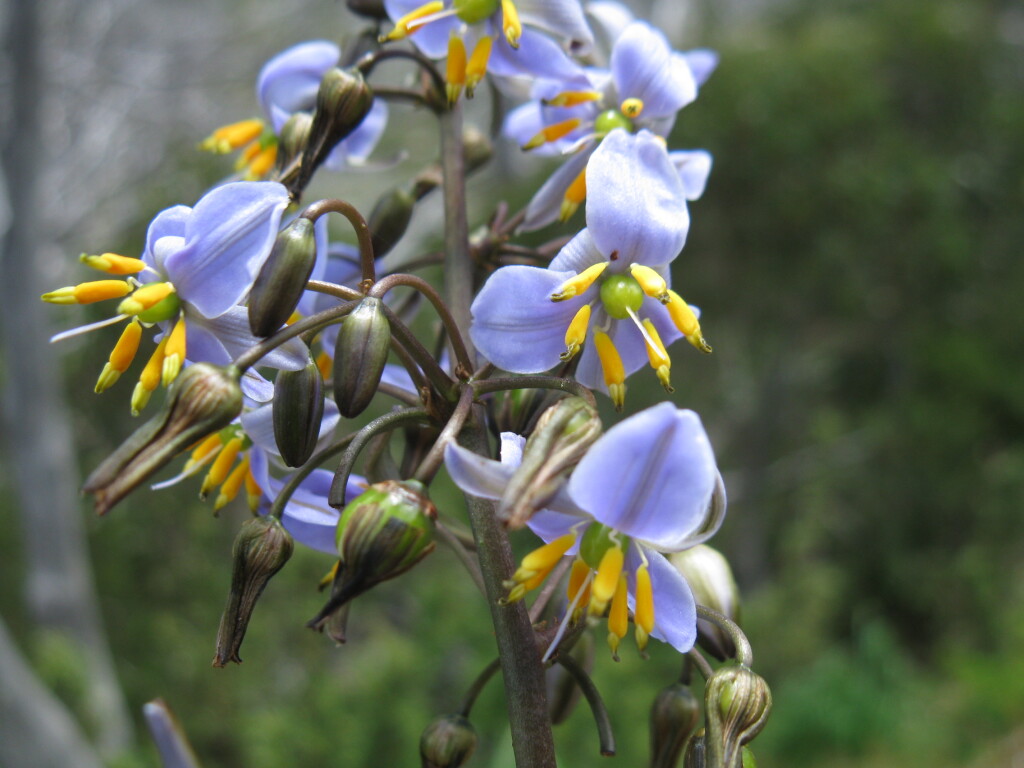Dianella sp. aff. tasmanica (Snowfields)
Alpine Flax-lilyUsually densely tufted plants, mostly to c. 1 m high and wide. Leaves mostly erect, rather stiff, sheathing and usually reddish at base, lamina flat or slightly recurved, 20–60 cm long, 22–32 mm wide, dull to glossy above, discolorous, margins and abaxial midrib irregularly but distinctly serrate-scabrous. Inflorescence usually not much exceeding leaves; panicle narrowly ovoid, usually rather dense, usually subequal or often longer than scape. Flowers numerous, 14–20 mm wide, outer perianth segments elliptic, usually strongly recurved, nner segments broadly ovate or broadly elliptic, spreading to recurved, pale to mid blue-lilac; stamens shorter than to subequal to perianth segments, filaments kinked, c. 1.5 mm long, swellings (strumae) egg-yolk yellow, subequal to or shortly exceeding the c. 2 mm long pale yellow anthers . Berry ovoid to ellipsoid, 10–25 mm long; olive-green to bronze-green and remaining firm when ripe, seeds c. lenticular, 3–4 mm long, smooth, glossy, black. Flowers Oct.–Feb.
EGU, HSF, VAlp. Also occurs in N.S.W. and A.C.T. Largely restricted to the higher subalps of north-eastern Victoria (e.g. Mt Buffalo, Falls Ck, Dargo High Plains), where locally common in Eucalyptus pauciflora woodlands and sometimes extending to above treeline, often in rocky sites. A population at lower elevation is known from Little River Gorge near Wulgulmerang in the far east.
Distinguished from Dianella tasmanica chiefly by the fruits that remain firm and greenish when ripe. The inflorescence of the Snowfields entity is usually denser and the panicle of similar length to the scape.
The Little River Gorge plants may represent a different entity, but no substantial morphological characters have been identified for this population yet.
 Spinning
Spinning